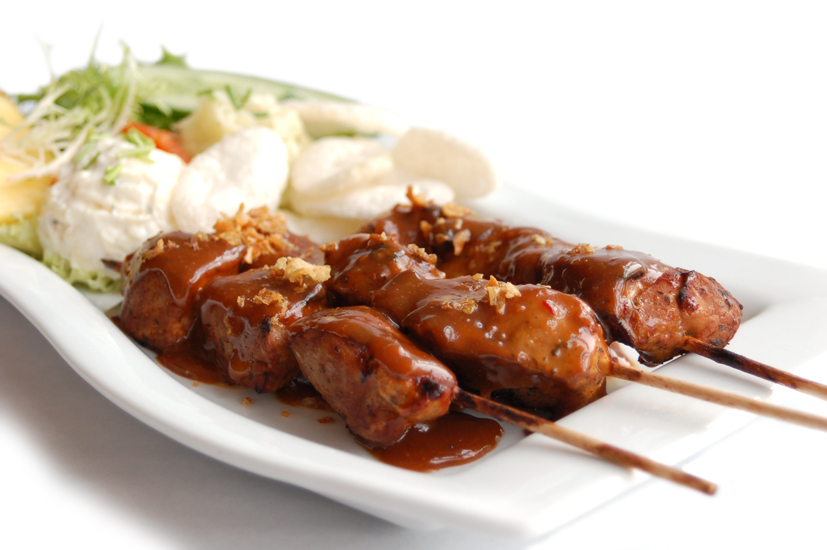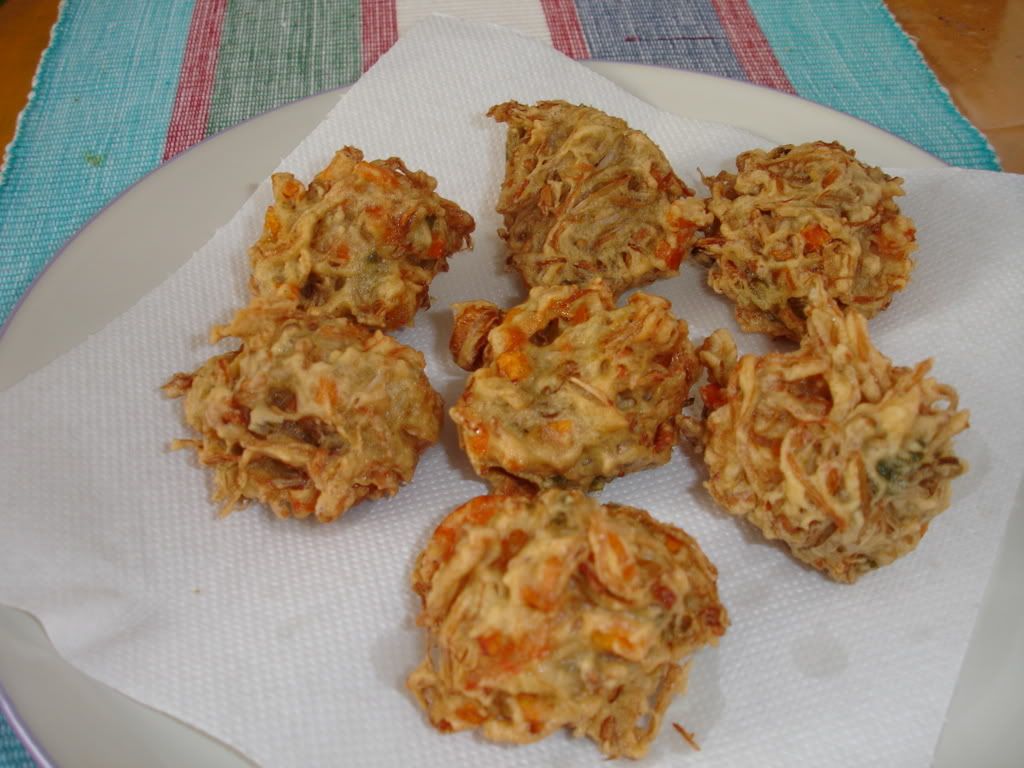How to Make Empek Empek
>> Jumat, 15 Januari 2010
Empek-empek is a fish cake mixed with sweet, hot, and sour sauce. It is a local dish from south Sumatera, empek-empek Palembang. You can have the fish cake fried after it is boiled or just boiled. This recipe is my own version of this local dish. Making empek-empek is such a tedious work and takes a lot of time. Though the place I live is not too far away from south Sumatera, it’s not easy for me to just fly there and buy empek-empek so I have make empek-empek on my own.
There are 2 versions of empek-empek Palembang that are so famous; empek-empek kapal selam (this one is with whole egg filling) and just ordinary empek-empek (this one is mixed with coconut milk and no filling). I like them both equally, but unfortunately, to make empek-empek kapal selam takes a lot of time and patience and I don’t have both…J . Since I do not have time and patience, I try to simplify the steps of making this dish and I choose empek-empek mixed with coconut milk and no filling.
Empek-empek ingredient:
- 500gr Tenggiri fish paste
- 200gr sago flour/tapioca flour
- 3 tbsp wheat flour
- 250ml coconut milk
- 4 egg whites
- 50gr shallots – slice into small and thin pieces, then fry.
- 10gr salt or just enough to taste
- 1 tsp pepper or just enough to taste
- 1 tsp salty soya sauce
Sauce ingredient:
700ml water
150gr palm sugar/Malacca sugar
5 tbsp clear vinegar
5 garlics
3 red chillies
2 chilli padi
50gr dried shrimp – use food processor to grind until smooth.
Salt and sugar to taste
Cucumber (cut into small pieces) and yellow noodle or spaghetti to serve the empek-empek.
To make Tenggiri fish paste:
Take out the bones and the skin from Tenggiri fish. Use only the meat of the fish, put into an electric blender and blend it until smooth and turn into Tenggiri fish paste.
To make empek-empek:
1. Mix egg whites using a mixer, then add coconut milk little by little while mixing, then add salt, pepper, soya sauce, fish paste (little by little), fried shallots, the sago flour, and the last one is the wheat flour while keep on mixing without a mixer until all ingredient are finely mixed together.
2. Cover and put aside for about 10-20 minutes while you prepare the water in the pot to boil the mixture you made before. Bring the water to boil.
3. Once the water is boiled, take the mixed ingredient and use a table spoon to scoop it out one at a time and drop it into the boiling water. Keep doing that until you finish scooping all the mixture. The spiky shape is a natural shape that is created when you scoop the mixture.
4. Once the empek-empek is cooked, it will float.
5. Take out all the floating empek-empek and put in a plate.
To make the sauce:
1. Bring the water to boil. While waiting for the water to boil:
2. Peel off the garlic skin, cut into 2 or 3 pieces.
3. Cut the chilies into 3 pieces.
4. Put into food processor to grind them until smooth and mixed.
5. Put the mixture of garlic and chilies in the boiling water, add the vinegar, palm sugar, a little bit of dried shrimp, sugar, and salt, and mix them together.
6. Once it boils, switch off the stove and filter it to a container.
To cook the spaghetti:
1. Bring 700ml water to boil.
2. Put the spaghetti and salt to taste.
3. Bring to boil for about 15 minutes until the spaghetti softens.
4. Drain the water.
To serve:
1. Deep fry the cooked empek-empek until golden brown then cut into small pieces and transfer into a bowl.
2. Add the yellow noodle/spaghetti.
3. Add the small pieces of cucumber.
4. Pour the sauce just enough to sink all the empek-empek in the bowl.
5. Put a little bit of dried shrimp on top.
Read more...






